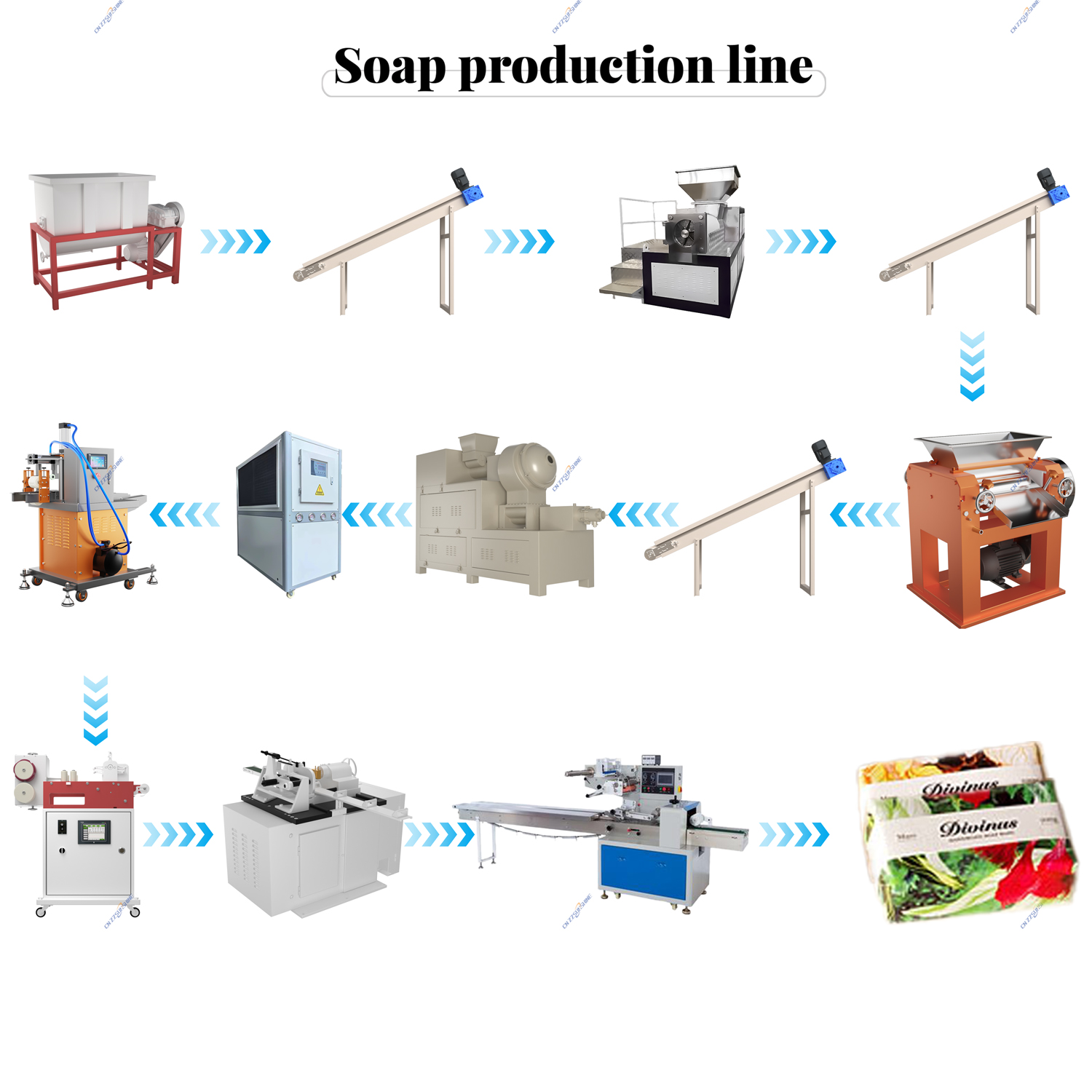Implementing a streamlined soap making production line is critical for manufacturers aiming to scale operations while maintaining product consistency and quality. A well-integrated system typically includes a robust soap mixer for thorough blending of oils, lye, and additives, ensuring homogeneous chemical processing. This is followed by a vacuum plodder machine, which compresses and extrudes the soap mixture under controlled pressure, eliminating air pockets to create dense, long-lasting bars. Vacuum plodders are indispensable for both bath soap making machines and laundry bar soap production lines, as they directly influence bar integrity and reduce waste.
For precise sizing, an electric washing soap cutter or custom soap cutting machine offers automated, hygienic separation of the extruded soap log into uniform bars. This automation replaces error-prone manual cutting, enhancing throughput and safety. The line then progresses to finishing stages—whether for a toilet soap finishing line requiring polishing and stamping, or a laundry soap making line needing simpler packaging. Integrating an automatic soap production line significantly reduces labor costs and human error. Key components like the soap plodder and industrial mixer for chemical processing must be selected based on viscosity, output targets, and whether producing hard laundry bars or delicate beauty soaps.
Leading manufacturers prioritize modular designs, allowing customization from compact bath soap making machines to expansive laundry bar soap production lines. OEM three-roller grinding mills can also be incorporated for refining additives in specialty beauty soap making lines. Ultimately, investing in a cohesive soap making production line—with synchronized plodders, mixers, and cutters—boosts yield, ensures batch uniformity, and positions brands competitively in markets demanding both efficiency and premium quality.




